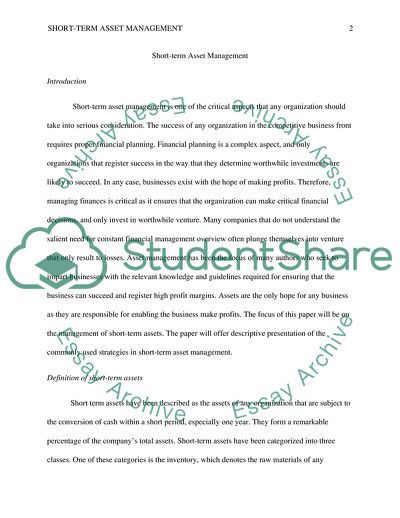Cite this document
(Short-term asset management Essay Example | Topics and Well Written Essays - 2750 words, n.d.)
Short-term asset management Essay Example | Topics and Well Written Essays - 2750 words. https://studentshare.org/management/1822903-short-term-asset-management
Short-term asset management Essay Example | Topics and Well Written Essays - 2750 words. https://studentshare.org/management/1822903-short-term-asset-management
(Short-Term Asset Management Essay Example | Topics and Well Written Essays - 2750 Words)
Short-Term Asset Management Essay Example | Topics and Well Written Essays - 2750 Words. https://studentshare.org/management/1822903-short-term-asset-management.
Short-Term Asset Management Essay Example | Topics and Well Written Essays - 2750 Words. https://studentshare.org/management/1822903-short-term-asset-management.
“Short-Term Asset Management Essay Example | Topics and Well Written Essays - 2750 Words”. https://studentshare.org/management/1822903-short-term-asset-management.


